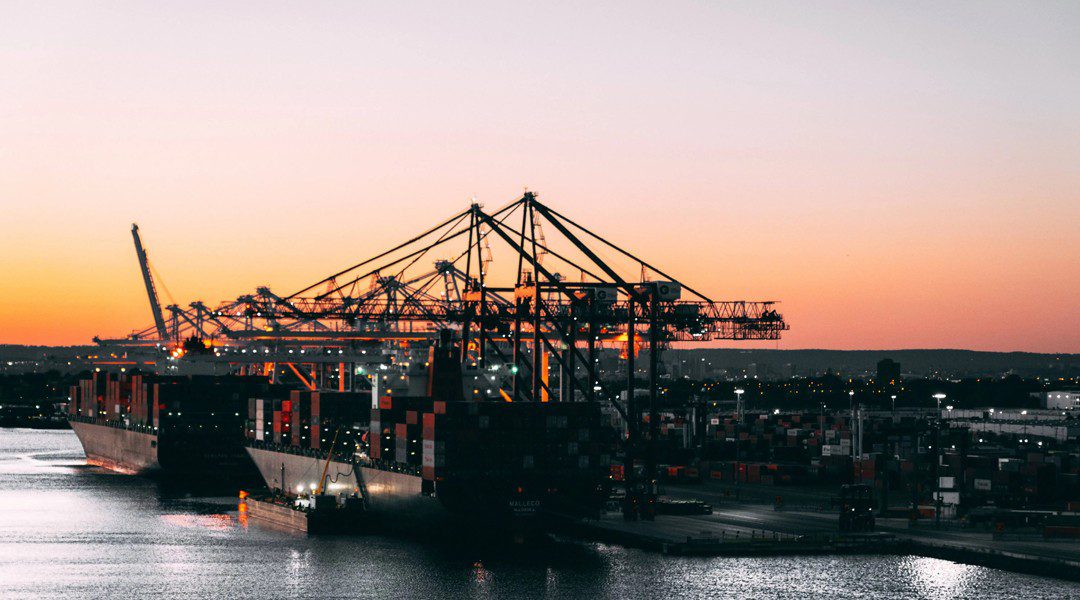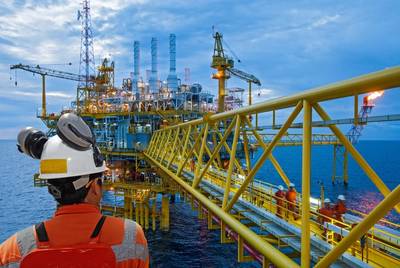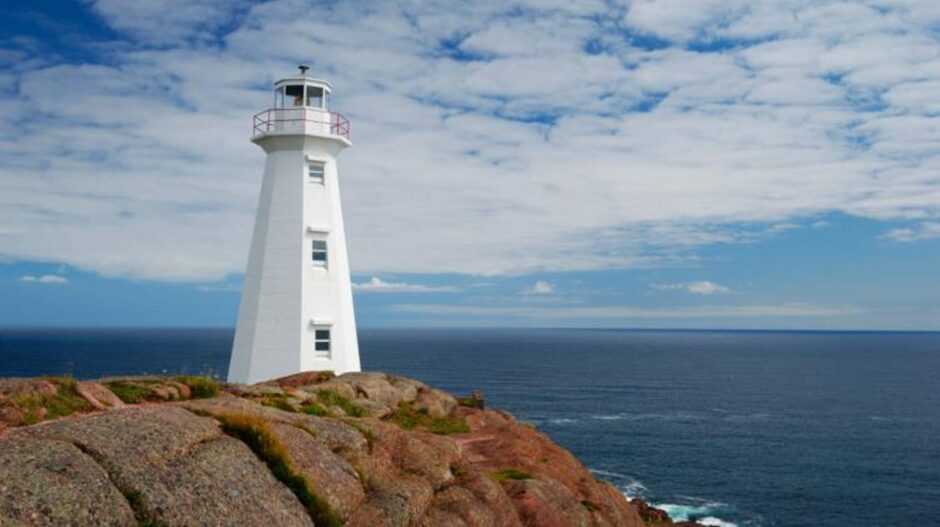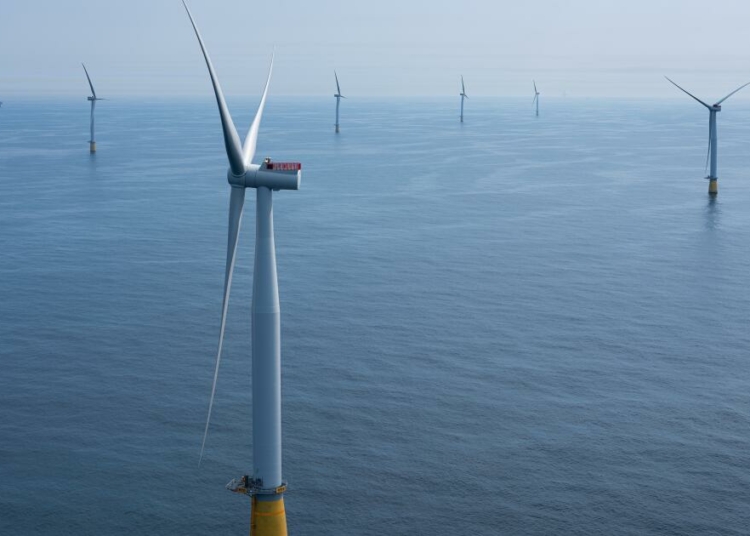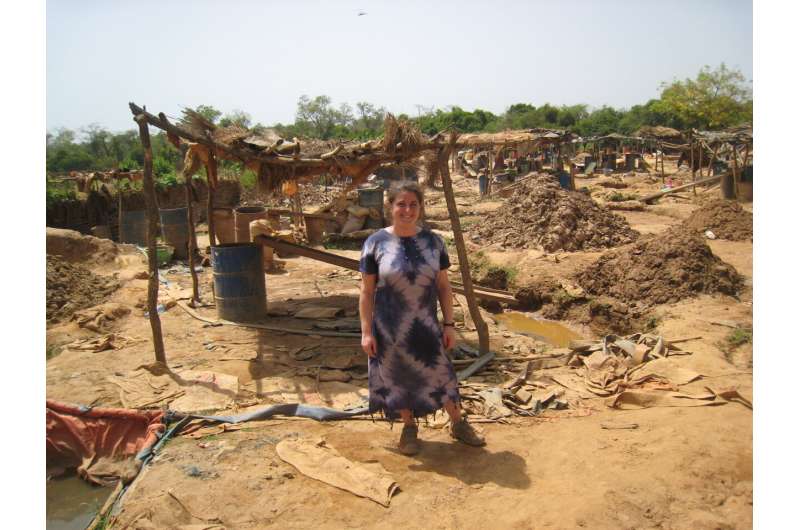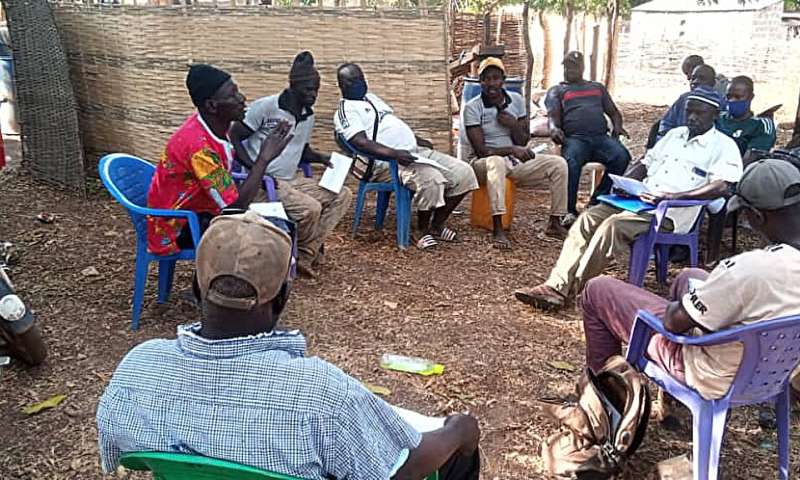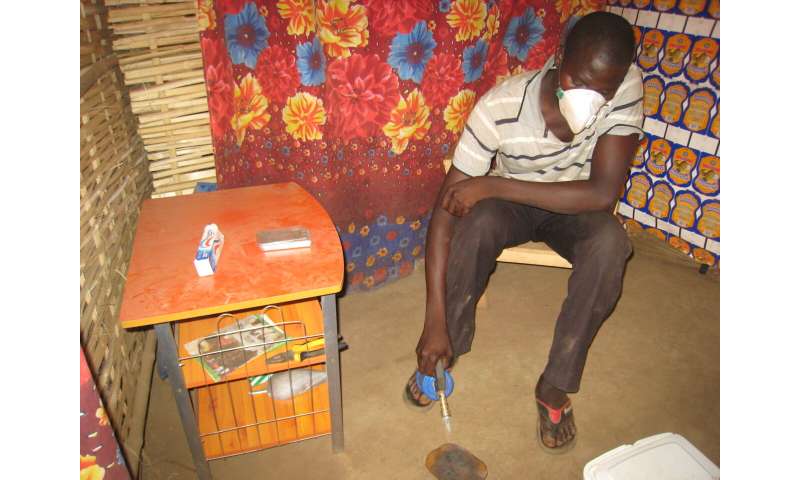BYJENNIFER MCDERMOTT AND THE ASSOCIATED PRESS
December 7, 2023

A generator and its blades are tugged at sea leaving State Pier in New London, Conn., Monday, Dec. 4, 2023, heading to South Fork Wind farm.
AP PHOTO/TED SHAFFREY
Despite some recent financial setbacks, U.S. offshore windpower has hit a milestone. An 800-foot tall turbine is now sending electricity onto the grid from a commercial-scale offshore wind farm on pace to be the country’s first.
The moment is years in the making and at the same time a modest advance in what experts say needs to be a major buildout of this type of clean electricity to address climate change.
Danish wind energy developer Ørsted and the utility Eversource announced Wednesday the first electricity from what will be a 12-turbine wind farm called South Fork Wind 35 miles (56 kilometers) east of Montauk Point, New York. It will be New York’s first offshore wind farm.
Ørsted and Eversource met Wednesday with New York officials to celebrate this “first power” milestone, in East Hampton, New York, where the wind farm connects to the onshore electric grid. They say the achievement builds a foundation for other large U.S. offshore wind farms that will follow.
So far, two of the 11-megawatt turbines are up. The second is undergoing testing, then it can begin producing power too. When the other ten are spinning and South Fork opens by early next year, it will be able to generate 132 megawatts of offshore wind energy to power more than 70,000 homes.
The first power announcement is “an incredible moment in the American clean energy story,” said Stephanie McClellan, executive director of the nonprofit Turn Forward, which advocates for offshore wind. She said South Fork will be a source of clean, reliable, domestically-produced energy.
“This is just the beginning of what offshore wind can do,” she said in a statement.
Offshore wind is central to New York’s plan to transition to a carbon-free electricity system by 2040. The state aims to install 9 gigawatts of offshore wind by 2035.
“New York’s nation-leading efforts to generate reliable, renewable clean energy have reached a major milestone,” New York Gov. Governor Kathy Hochul said in a statement Wednesday. “South Fork Wind will power thousands of homes, create good-paying union jobs and demonstrate to all that offshore wind is a viable resource New York can harness for generations to come.”
Some Long Island residents at first objected on both environmental and aesthetic grounds to the transmission line running through their community. In a lawsuit four alleged that trenching under roads would spread contaminated groundwater. A judge dismissed their complaint in July.
The project has also overcome objections from fishermen and some environmentalists. Fishermen said they were not adequately compensated for their loss of fishing grounds. The group Save The Bay said the energy project shouldn’t be placed near such a rich diversity of fish.
Business groups and construction unions backed the project.
Large offshore wind farms have been making electricity for three decades in Europe, and more recently in Asia. The first U.S. offshore wind farm was supposed to be a project off the coast of Massachusetts known as Cape Wind. The application was submitted to the federal government in 2001. It failed after years of local opposition and litigation.
Turbines began turning off Rhode Island’s Block Island in 2016. But with just five of them, it’s not a commercial-scale wind farm.
Currently there are two commercial offshore wind farms under construction in the United States, South Fork Wind and Vineyard Wind. Vineyard Wind will be a 62-turbine wind farm 15 miles (24 kilometers) off the coast of Massachusetts. It has not started generating power yet, the developer said Monday. They’re installing and testing five turbines first.
At State Pier in New London, Connecticut, blades and massive tower sections for South Fork are lined up, ready to leave port for the sea where they’ll be erected in the coming weeks. The nacelles that house the generator for each wind turbine are there, too.
On Monday, a barge carrying three blades and a nacelle for the third turbine left port. As Jeff Martin, of Eversource, watched, he said it was a “joy” to see the industry finally move from concept to fruition in the United States, to help reduce the nation’s dependence on fossil fuels.
“Finally we’re taking this step to catch up with the rest of the world and do our part to collectively address climate change,” said Martin, Eversource’s director of business development for the offshore wind group.
Large, ocean-based wind farms are a linchpin of government plans to shift to renewable energy in populous East Coast states with limited land for wind turbines or solar arrays. The Biden administration aims to power 10 million homes with offshore wind by 2030 and establish a carbon-free electric grid five years later.
But the industry has had hard times recently. Ørsted announced it’s cancelling two large offshore wind projects in New Jersey due to problems with supply chains, higher interest rates and a failure to obtain the amount of tax credits the company wanted. Developers in New England recently canceled power contacts too, saying their projects were no longer financially feasible. The series of setbacks for the nascent U.S. offshore wind industry jeopardizes the clean energy goals.
Other projects though, are advancing. Ørsted is moving forward with Eversource on construction of Revolution Wind, Rhode Island and Connecticut’s first utility-scale offshore wind farm. The 704-megawatt project will power roughly 400,000 homes. Tower sections, blades and nacelles are expected to begin arriving in New London as early as this spring.
South Fork and Revolution Wind are a “bright spot for a challenged industry,” said David Hardy, group executive vice president and CEO Americas at Ørsted.
“As we demonstrate that we can build this project and build Revolution, then people will realize the real opportunity of offshore wind,” he said.
By: BNN Correspondents
Published: December 8, 2023

The U.S. Federal Permitting Improvement Steering Council has given the green light to Revolution Wind, a $1.5 billion offshore wind farm off the coast of Rhode Island. This ambitious project, helmed by Danish company Orsted and U.S.-based Eversource, aims to generate a staggering 704 megawatts of clean energy for Connecticut and Rhode Island. This new venture dovetails with the Biden administration’s emphasis on offshore wind power, despite mounting challenges, including inflation, high interest rates, and supply chain delays, that have cast a shadow over the goal to establish 30 gigawatts of offshore wind power by 2030.
Revolution Wind: A Beacon for Renewable Energy
Revolution Wind stands as the fruit of international collaboration, with Danish company Orsted and U.S-based Eversource at the helm. The project carries a price tag of $1.5 billion and promises to supply a whopping 704 megawatts of clean energy to Connecticut and Rhode Island. Its approval by the U.S Federal Permitting Improvement Steering Council marks a significant stride in the nation’s journey towards harnessing offshore wind power.
Against a backdrop of financial turmoil in the U.S. offshore wind energy market, the South Fork wind farm off the coast of New York stands as a beacon of progress. Developed by Orsted and Eversource, the farm has been supplying power to the state’s grid, becoming the first commercial-scale offshore wind farm in the U.S. This milestone marks a significant advance in the country’s clean energy transition, despite the industry’s recent financial setbacks.
While the strides made in offshore wind power are commendable, the journey is not without its hurdles. Rising inflation, high interest rates, and supply chain delays threaten to derail the Biden administration’s goal of bringing 30 gigawatts of offshore wind power online by 2030. The escalating costs have forced many developers to cancel or renegotiate power purchase contracts, as investment costs have become untenable with previously agreed prices. As the sector navigates these turbulent waters, the focus remains on the ultimate goal: a future powered by clean, renewable energy.
Clean Energy
NY Project Produces America's First Utility Scale Wind Power
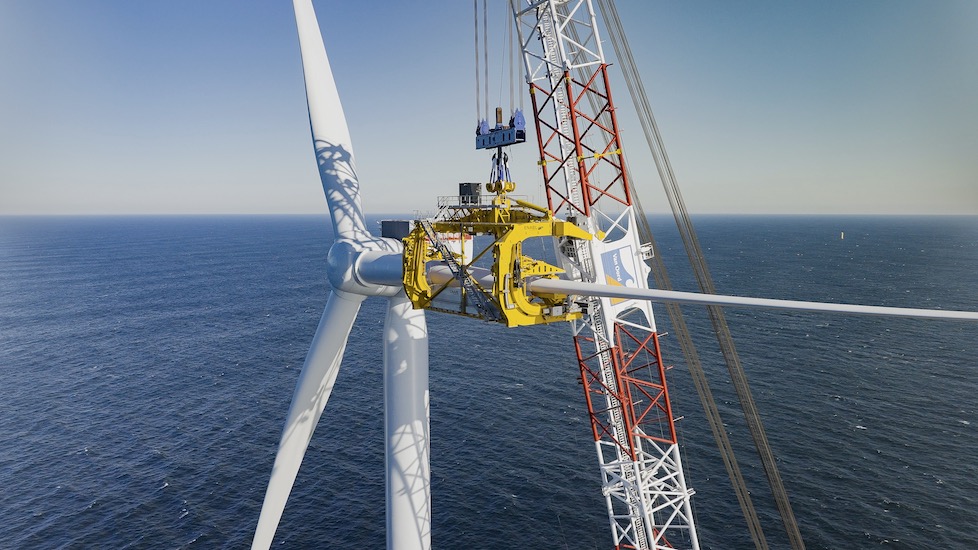
Power was transmitted from an 11-MW turbine just installed at the South Fork offshore wind project off Long Island, N.Y.—the first from a US utility scale facility.
Photo: Courtesy of South Fork
Despite financial gyrations in the U.S. offshore wind energy market that have caused project delays and cancellations over the past two years, America now has joined other world nations in having energy generated for the first time from a utility-scale facility.
That U.S. clean energy milestone was reached with the early December announcement that the 132-MW South Fork project off New York successfully sent power to the state grid, in reaching its onshore connection point in East Hampton, Long Island. The estimated $627-million project is located 35 miles east of Montauk.
“New York's nation-leading efforts to generate reliable, renewable clean energy have reached a major milestone," said Gov. Kathy Hochul, stating that it will eliminate up to 6 million tons of carbon emissions each year. “South Fork Wind will … demonstrate to all that offshore wind is a viable resource New York can harness for generations to come."
Two of 12 Siemens Gamesa-made turbines that will power the project being built by a joint venture of developer Orsted and Connecticut utility Eversource, were installed —with the remaining 11-MW structures to follow through early 2024, the team estimates.
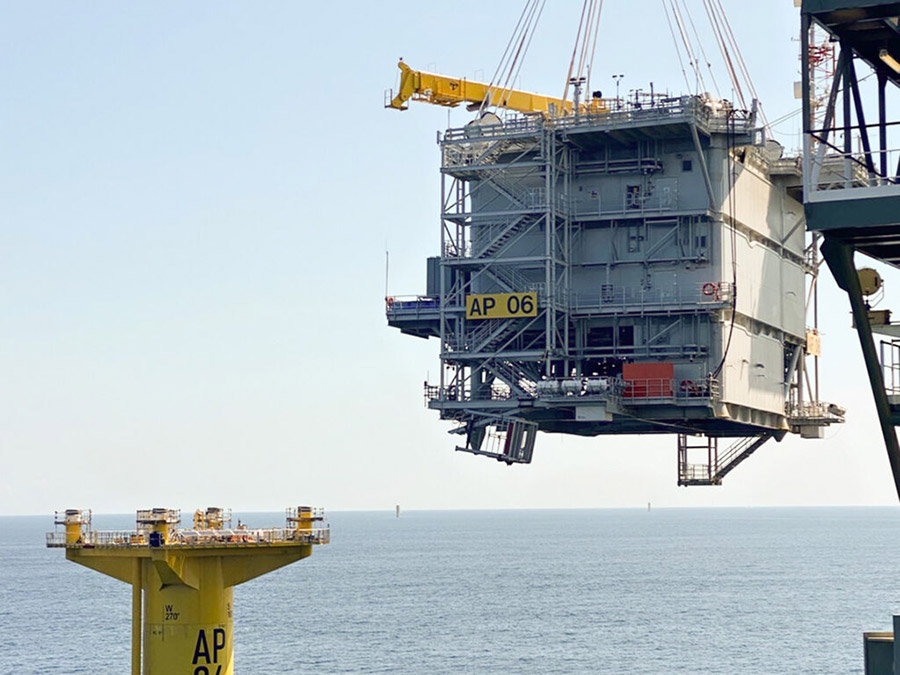
Kiewit-made offshore substation for South Fork project off Long Island, N.Y. was installed earlier this year.
Photo: Courtesy of Orsted
The project would be the first completed in New York, which has set an aggressive goal of 9 GW of offshore wind capacity by 2035. Project work, based at the port of New London, Conn., also includes installation of the project's offshore substation fabricated by Kiewit in its Texas yard—the first to be made in the U.S.
The project's 68-mile high-voltage, alternating current export cable was also the first to be domestically produced, manufactured by France-based Nexans at its expanded Charleston, S.C., plant. Installation was done by Belgium-based firm DEME and Dutch marine engineer Boskalis.
Nexans also said in November it has a “framework agreement” with Orsted and Eversource to manufacture cable for the 704-MW Revolution Wind project that will supply power to Rhode Island and Connecticut. "The completion of the work at South Fork Wind Farm is a monumental step in the U.S. energy transition,” said Pascal Radue, executive vice president of Nexans' generation and transmission business group. “We are looking forward to continuing work in the state and in the broader region."
Monopile foundation installation was done by a Netherlands-flagged vessel, Aeolus, with components delivered by barges, as mandated under U.S. law. Long Island-based contractor Haugland Energy Group LLC installed the duct bank system for South Fork Wind’s onshore transmission line connecting to the Long Island Power Authority grid and led construction of the onshore interconnection facility. LS Cable installed and jointed onshore cables, with support from Elecnor Hawkeye.
Energy Transition Lead
The project's power generation “represents years of hard work, vision, and the courage to lead in our energy transition," said New York State Energy Research and Development Authority President and CEO Doreen M. Harris. “East Hampton has now made history as the first community in New York to receive clean energy from an offshore wind farm," said David Hardy, Orsted Americas CEO. Some residents had opposed the cable routing plan.
In Massachusetts, the 800-MW Vineyard Wind project, which was first in the U.S. to be permitted and start construction, said it has installed five of 62 planned 13-MW GE-manufactured turbines. Developers Avangrid and Vineyard Offshore, a unit of Copenhagen Infrastructure Partners, said these are being tested and could deliver power by year end to the New England electric grid.
Avangrid CEO Pedro Azagra said the estimated $3-billion project "is working through the final technical requirements" to start the power flow.
Despite approval process roadblocks during the Trump Administration for South Fork and Vineyard Wind, their earlier starts enabled them to lock in financing and supply chain costs before more recent inflation-generated increases that have caused project delays—as well as cancellations of project power agreements in Massachusetts and Connecticut and of two projects in New Jersey.
Massachusetts recently formed a pact with Rhode Island and Connecticut to better coordinate developer proposal selection and enable potential cross-border sharing of port, manufacturing and other supply chain investments.
With New York still facing cancellation of another Orsted project and one awarded to Equinor-BP—totaling 4 GW—after state regulators would not allow power price adjustments, officials recently ramped up project awards and launched a new procurement round ending early next year to insure capacity.
Earlier approved projects would be allowed to rebid projects at higher prices, according to NYSERDA.
Also, U.S. Treasury Dept. rules proposed last month clarified that federal investment tax credits would be extended to subsea cables and onshore power treatment facilities under the Inflation Reduction Act. But the incentives do not apply to third-party-owned offshore transmission assets, such as planned mesh systems that sector proponents say offer cost savings in linking multiple projects, according to a Dec. 7 report in industry publication Recharge.
A five-turbine, 30-MW project open since 2017 near Block Island, R.I. is the nation's first operating offshore wind energy facility but it is not utility scale. A 12-MW pilot project also operates off the coast of Virginia.
